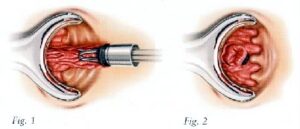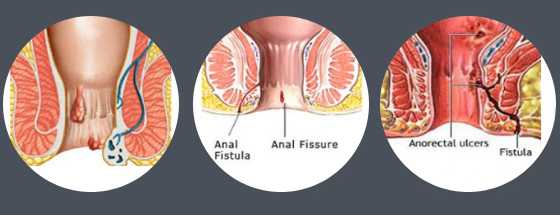Sometimes the lack of proper medical knowledge leads to delays in identifying the disorder a patient suffers from. Based on the assumptions, people denote the diseases with synonyms. It is essential to know the correct disease for pain or discomfort to start with a proper diagnosis. Certain diseases share similar characteristics and symptoms. Most people are unaware that anal diseases are the most common, but the symptoms of each disease are different.
Defects in the anal canal are considered disorders. Symptoms of three diseases such as piles, anal fistula, and fissure may be the same resulting from bleeding to anal itching but are unique in treatment procedures. The three diseases come under proctology, and helpful treatments are recommended to treat each condition individually.
In this blog, there are the details of the diseases to delve deeper into understanding the differences between anal fistula, piles, and fissure.
Read on to have a deeper understanding of the three anal disorders.
What is Fissure?
It is a need to have an in-depth understanding of what does anal fissure refer to. It refers to a small cut in the lining of the anus. The patient suffering from an anal fissure may experience severe pain and bright red blood during and after passing the stool. Also, fissures refer to kinds of cracks. Fissures need to be treated properly; otherwise, while passing stool, the tear of the fissure gets worsens.

Basic Differences between Fistula and Fissure
Patients will not find many differences between the fistula and fissure. It is equally important to consult with a primary health care provider. Fistulas are tube-like passages between organs, or else it is considered the opening in the anal area filled with pus.
What is Piles?
When the blood veins and tissues start swelling around the anal opening, it is considered as piles. It mainly stems because of the fact the chair-ridden lifestyle. Swelling veins around the anal area and exerting a lot of pressure in the same area leads to discomfort in patients. The best way to identify that you have developed piles is experiencing pain during bowel movements and bleeding in stools. Depending on the extent of the disease, piles are classified into four grades.

Causes of Piles
People affected with piles are very common nowadays, but why does it affect frequently? People generally develop piles because of sitting on hard surfaces for continuous hours, chronic cough, and constipation.
People aging fifty or above develop piles. Largely, it is visible among pregnant women. Those who suffer from external hemorrhoids may experience the occasional thickening of the blood.
Classification of the Disorder
Piles broadly fall into internal and external hemorrhoids. Internal hemorrhoids develop within the anus, not visible within the naked eye. Patients undergo painless bleeding, and for diagnosis, they need rectal examination.
External hemorrhoids appear on the outer lining of the anus. For proper treatment, people need medical assistance, and it is visible to the naked eye.
Is piles risk, and can they be treated without hazards?
For temporary relief, patients suffering from piles can find temporary relief measures such as over-the-counter medicines, pads, creams, and ointments. If piles are diagnosed in the early stage, these can be cured by consuming a high fiber diet and water a day. To get rid of pain instantly, doctors advise applying ice packs on the affected parts.
If colorectal malignancy affects patients, they need to take certain precautionary measures to normalize bowel movements. For this, they may need the adoption of stool softeners and inserting suppositories. There is less chance of recurrence of piles after surgery or laser treatment.
Causes of Anal Fistula
When the glands responsible for providing fluids to nearby organs are blocked, it causes an anal fistula. Sometimes because of the absence of moisture, bacteria start growing in those areas creating abscesses. Because of lack of treatment, abscesses can grow and move outside the anal opening. Thereby, abscesses may transform into anal fistulas. The other causes of fistulas are tuberculosis, sexually transmitted diseases such as Herpes, AIDS, and Syphilis.
Are Anal Fistulas Diagnosed?
While diagnosing fistulas, it is possible to diagnose anal fistulas. Some fistulas are easy to diagnose, while others are not. So, a physical analysis is needed to diagnose an anal fistula. While diagnosing, doctors make an effort to check whether blood and pus ooze out from the anal region.
For a better diagnosis, doctors prefer to conduct certain specific tests such as X-rays or CT scans. If the conditions grow worse, patients can visit specialist doctors for colon conditions.
What are the Common Methods Identification of Anal Fistulas?
Even if you are unaware of the common symptoms of anal fistula, the best way to identify the disease is to keep an eye on some of the common symptoms. Those suffering from redness, painful bowel movements, chronic pain, fever are prone to get attacks of anal fistulas. From preventing serious conditions, it is better to consult an expert.
The Final Thoughts
Without vague assumptions on anal disorders diagnosis, it is better to consult some proficient experts who can differentiate between fissure and fistula. However, fistulas are commonly observed among obese patients who schedule their programs for a long time. The best way to treat it is to practice good defecation hygiene.
Patients need to have a clear understanding of each symptom and treat each of these individually. For this, they need to develop clear understandings of each of them. Though the diseases share similar characteristics, each has its unique symptoms. To get rid of further complications, it is simple to visit doctor’s chambers and get the right treatments.
It is assessed that piles and fissures occur among individuals because of inactive lifestyles and unhealthy eating habits. For a smooth recovery, patients have to be aware of the extent of the diseases and check the diversity in anorectal diseases. However, it is better not to neglect the symptoms of piles such as blood, mucus, and painful bowel movements.


